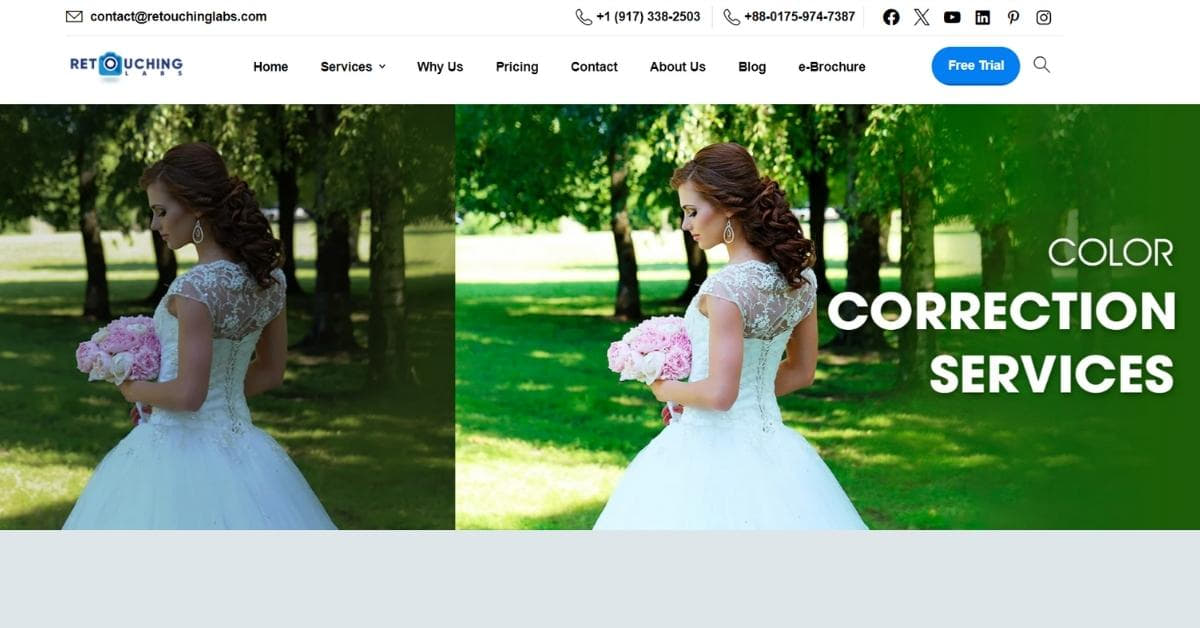Color correction services play a pivotal role in the world of photography and graphic design, ensuring that images and videos look their best. Whether you’re a professional photographer, a content creator, or just someone looking to enhance your visual content, understanding the ins and outs of color correction is essential. In this comprehensive guide, we will walk you through the process of color correction, its significance, and frequently asked questions that will help you navigate this intricate field with ease.
Why Is Color Correction Important?
Color correction is the process of adjusting and enhancing the colors in an image or video to achieve the desired look. It’s essential for several reasons:
- Consistency: Color correction ensures that all images and videos in a project have a uniform color scheme, providing a cohesive and professional look.
- Image Enhancement: It can breathe new life into dull or washed-out visuals, making them more vibrant and appealing. Thus, color correction is a crucial part of photo editing.
- Storytelling: Correct colors can convey emotions, set the mood, and tell a more compelling story through visuals.
- Client Satisfaction: For professionals, meeting clients’ expectations and delivering high-quality work is crucial.
The Basics of Color Correction Services
In this section, we will delve into the key principles that underpin the world of color correction, providing you with the knowledge needed to elevate your content to the next level.
1. Understanding Color Balance
Color balance refers to the relative distribution of primary colors (red, green, and blue) in an image. It’s crucial for achieving accurate and natural-looking colors. Color correction professionals use tools like histograms to analyze and adjust color balance.
2. Correcting Exposure
Adjusting exposure levels is a fundamental aspect of color correction. Overexposed or underexposed areas can cause color issues. Professionals use exposure correction tools to fix this.
3. White Balance Adjustment
White balance ensures that whites appear as pure white, not with a color cast. This correction is especially important for photos taken in different lighting conditions.
4. Saturation and Vibrance
Saturation and vibrance adjustments affect the intensity and richness of colors in an image. These adjustments help create the desired atmosphere in the final product.
5. Contrast Enhancement
Correcting contrast can make a significant difference in the appearance of an image. Adjusting shadows, midtones, and highlights can give the image depth and pop.
6. Color Grading
Color grading goes beyond correction, as it’s more about artistic choices. It involves applying creative filters and effects to achieve a specific style or mood.
FAQs
Q1: Can I do color correction on my own, or should I hire a professional?
A1: You can certainly do basic color correction on your own with various software tools. However, for more complex projects or when precise results are critical, it’s advisable to hire a professional color correction service.
Q2: How much does professional color correction cost?
A2: The cost of professional color correction services varies based on the complexity of the project, the number of images or videos, and the service provider. It’s best to request a quote for your specific needs.
Q3: What software is commonly used for color correction?
A3: Popular software options for color correction include Adobe Photoshop, Lightroom, and Premiere Pro, DaVinci Resolve, and Capture One. The choice depends on your specific needs and familiarity with the software.
Q4: How long does it take to complete color correction for a project?
A4: The time required for color correction depends on the number of images or videos, the complexity of the corrections needed, and the service provider’s workload. A simple project might be completed in a few hours, while more extensive work can take days or weeks.
Q5: Can color correction services fix poor-quality images?
A5: Color correction can improve the appearance of subpar images, but it has its limits. Severely damaged or low-resolution images may not be restorable to a high-quality standard.
Conclusion
Color correction services are indispensable for achieving the best possible visual content. By understanding the basics of color correction and the importance it holds, you can make informed decisions when it comes to your visual projects. Whether you’re a professional seeking to deliver top-tier work or an enthusiast looking to enhance your photos and videos, mastering the art of color correction will undoubtedly elevate your creative pursuits.
This page was last edited on 22 February 2024, at 11:19 am
